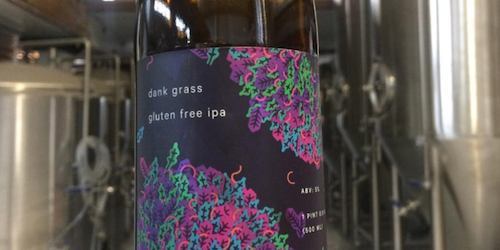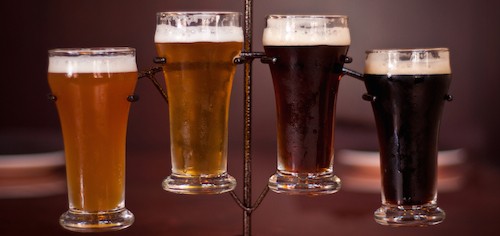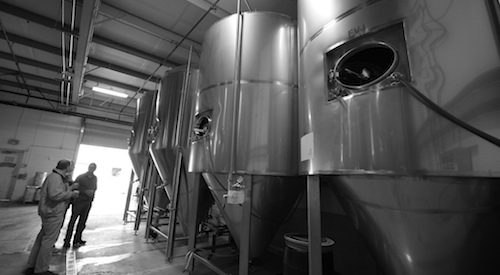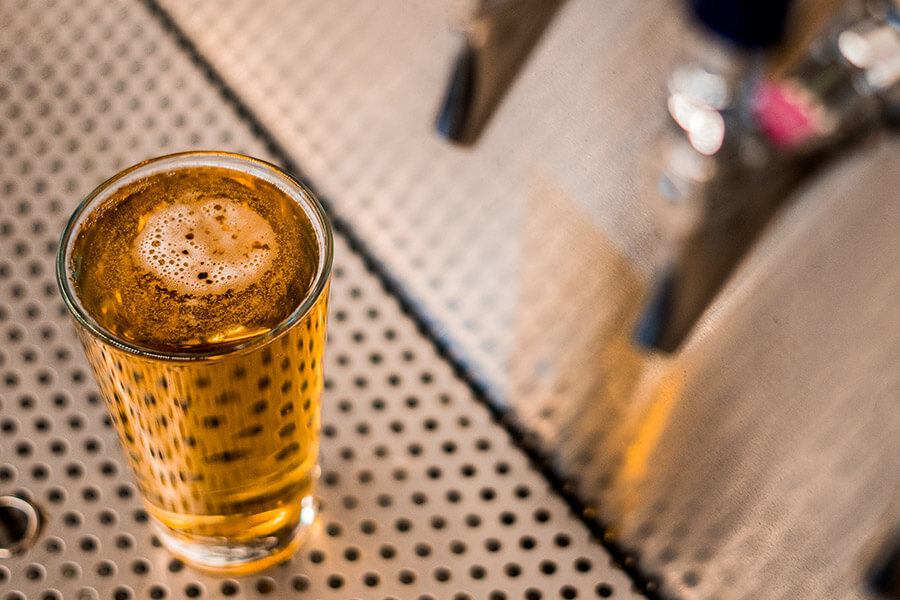Of the many gluten-free products that have come to market in recent years, it can be argued that gluten-free beer is the most difficult to produce, assess, and monitor on a commercial scale. The differences in labeling and terminology can be somewhat confusing, but here is what you need to know before you choose your next gluten-free beer:
Gluten-Free Beer
Gluten-free beer can only be classified as gluten-free if there is no gluten in the original recipe. That means absolutely no wheat or other related grains. Therefore, gluten-free beers are made with gluten-free ingredients such as sorghum, buckwheat, millet, and quinoa. These different ingredients account for the more unusual flavors in gluten-free beers.
Researchers and experts agree that <20 ppm is safe for almost all people with gluten-related disorders. All batches of gluten-free beer must be tested and verified as meeting this requirement in order to be packaged and labeled as gluten-free.

There may still be potential cross-contamination risks when a gluten-free beer is contract brewed or brewed on the same lines as other beers that contain gluten ingredients. It is extremely rare for a beer facility to go beyond that and produce nothing but gluten-free product, removing the risk of any cross-contamination.
Gluten-Reduced Beer
If a brewer chooses to make a beer with wheat, barley, or rye, then they can use an enzyme called Clarex to “break down” gluten proteins. The enzyme does NOT remove the gluten from the beer but breaks down the gluten molecule into smaller pieces that are too small to be detected in laboratory tests and, according to the brewers, too small for your body to detect as gluten.
Brewers of some gluten-reduced beer claim that the proteins are converted into non-harmful amino acids, and feel confident that their product is non-harmful to those who are gluten intolerant. However, the U.S. government prevents brewers from labeling anything “gluten-free” that contains these ‘de-glutened’ grains. They can be labeled as ‘gluten-reduced’ if they pass the same laboratory tests to show that the beer contains less than 20 ppm gluten. You may see statements such as “crafted to reduce gluten” or similar.
With both types of beer being deemed safe, the difference between gluten-free beer and gluten-reduced beer is the initial ingredient list and the consumer’s comfort level with their own dietary requirements.

Gluten-Free and Gluten-Reduced Beer Options
Since 2012, when the first rulings came into place to help inform those with gluten sensitivities, a range of ales and lagers started to become available to the consumer. There are now several options out there from small and independent craft brewers for both gluten-free and gluten-reduced beers. Because these are often from smaller brewers, their distribution networks may not see them reach all markets nationwide.
Popular Gluten-Free Beers
New Planet Brewing Blonde Ale
Lakefront Brewing New Grist
Sprecher Brewery Shakparo Ale
Brasseurs Sans Gluten Glutenberg IPA / APA
Marz Community Brewing Dank Grass IPA
Anheuser-Busch Redbridge
Popular Gluten-Reduced Beers
Stone Brewing Delicious IPA
Wicked Weed Brewing Gluten FREEk
New Belgium Brewing Glütiny Pale Ale & Blonde Ale
Two Brothers Brewing Prairie Path

Gluten Testing Science
When it comes to gluten in beer, there are four kinds of ingredients to be concerned with. Each of these has a unique protein strain that can affect people with gluten-related disorders.
1. Wheat – contains the protein gliadin
2. Barley – the protein here is known as hordein
3. Rye – the protein is called secalin
4. Oat – which contains avenin
At this time, commercial tests are only available for testing gliadin.
For those looking to limit or avoid gluten, the good news is that fermented foods such as beer or sourdough bread often have lower levels of gluten because of the fermentation process. The bad news is that this process also makes it difficult to measure the trace amounts of gluten accurately.
It is also not currently possible to measure accurately down to zero ppm. This is the reason why even beers that are labeled as ‘gluten-free’ must still carry an advisory statement on the packaging warning that it is impossible to verify the gluten levels of the final products, as required by the Alcohol and Tobacco Tax and Trade Bureau (TTB) and the U.S. Food and Drug Administration (FDA).
Conclusion: Every Case is Unique
When choosing to consume beer, those with gluten-related disorders must be diligent about educating themselves and making decisions based on their own experiences. Some people are fine with gluten-removed beers while others must stick to gluten-free, while others can have reactions to both.
This post is intended to form part of your own research into your individual situation and needs. As with any other element of a gluten-free lifestyle, only consume items that do not have a negative impact on your health.
by Lee Jarvis

